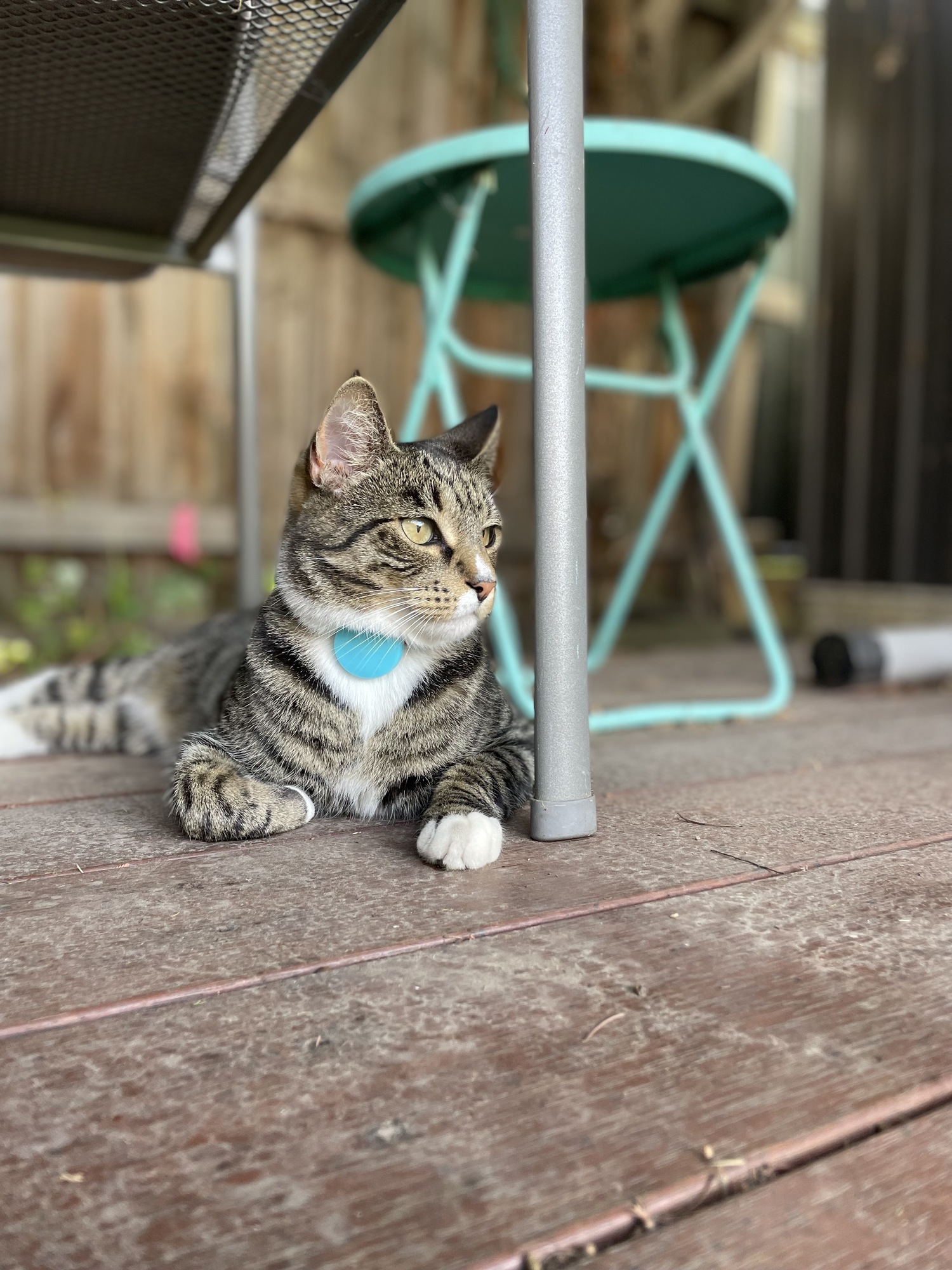 How to ask your landlord for a pet
Read more
How to ask your landlord for a pet
Read more
Last updated: 6 Jun, 2023
Published on: 11 May, 2023
As a cat owner, my biggest fear is that one of my cats won’t come home one day

Losing a cat is not like losing a dog. Humans and dogs, well, we pretty much see the world on one plane, but a cat's world is totally different.
PetRescue's co-founding director, Vix Davy, has written about her personal experience using Apple AirTags with her own cats and how they have become a game-changer to keep them safe.
Cats are basically superheroes; they can jump six times their height (which is the equivalent of you or I jumping three stories from a standing start!), and they can squeeze into places that are a little wider than their head because of their free-floating collar bone (who knew!), and, as all cat owners know, they can make themselves invisible - remember that time your cat was asleep in the back of a drawer, and you thought they were lost forever?
This is pretty cool for cats, but for a cat owner, it means if they go missing, it’s almost impossible to find them. Your cat might be just a few metres away, but if he’s up under the floorboards, in the house eaves or just in a patch of unkept garden - if you can’t see them, you can’t find them.
In fact, a study shows that if an indoor cat disappears, they are likely to be no more than 50 metres from where they escaped, and a cat that’s usually allowed outside will be found within a 500-metre radius. But even with this knowledge, finding a lost cat is like looking for a needle in a haystack.
So when Apple launched the AirTag, I jumped on board! I’d tried a couple of other cat-tracking devices, and while it was fun to see a map of my cats’ daily jaunts, the lag time meant that if either of them had actually been lost, the collars wouldn't help find them.
AirTags, on the other hand, give you a tool to systematically search your neighbourhood and, in my opinion, gives you the best chance to find your scared, lost or injured cat.


How do they work?
AirTags send out a Bluetooth signal that pings off nearby devices in the Find My network. Just imagine, as your cat walks around the neighbourhood, his Airtag is pinging off all the neighbour's phones and sending the location back to a map on your phone.
Why AirTags Work for Cats (and not so much Dogs)?
AirTags are made for bags, wallets and property, but because distressed cats usually hide, locking in on their location is very much like locking in on a handbag. The same features that help you find your wallet can help you find your cat:
The ’Find My’ app shows the location of the AirTag (and your cat) on a map.
‘Notify Me’ buzzes your phone when your cat comes near a device in the network, updating their current location.
‘Find Nearby’ when you are within a couple of metres of your cat, this feature shows directional arrows to hone in on an exact location. (although, to be honest, you have to pretty much be on top of your cat for this to work)
And my favourite feature - ‘Play Sound’. Yep, you can make your AirTag beep, and hear precisely where your cat is. I’ve also trained my cats to run inside for a treat when their collars beep, which is super handy when one of them is up in the roof space!
AirTags aren’t perfect. You need to be quite close to your cat for some of the finer features to work, but they do allow you to narrow the search and then get close enough to find them.
…And why not dogs? Dogs can easily swallow an AirTag. AirTags have batteries and are incredibly dangerous to ingest (this goes for babies, children and drunk friends too!)


WARNING Apple clearly states on its website that Airtags are not made for pets and do not encourage them to be used on pets. It’s up to the individual pet owner to weigh up any risks and take responsibility for their choice. Personally, I feel safer having them on my cats' collars than not, but I do take the collars off at night when they are home safely tucked up in bed!
You might find this article interesting to read as well.













































